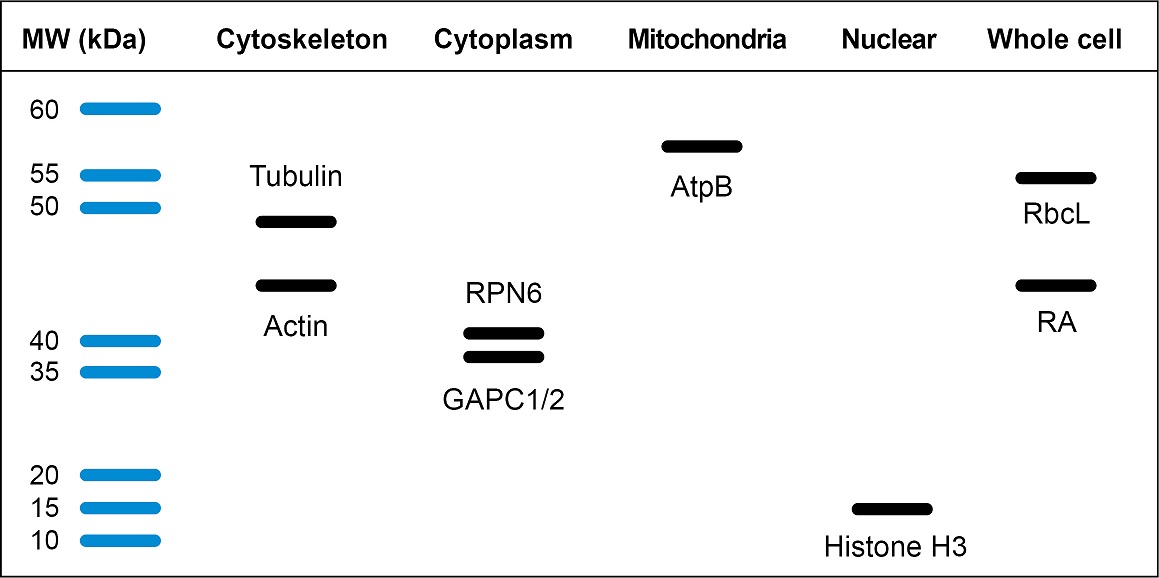Loading controlsIn biology there are no universal controls. One has to determine a priori what does not change in one's test conditions and use that as a control. The choice of appropriate house-keeping protein would depend upon the particular experiment, and it needs to be confirmed. House-keeping proteins cannot be used for normalization if there is a suspicion that experimental conditions are affecting their expression. Other possible internal controls • Total protein (express fmol target protein/µg total protein) For short term experiments, Rubisco protein makes a good loading control as its turnover is slow. However, Rubisco level do vary with nutrient levels, particularly nitrogen.
|  Loading control guide |

